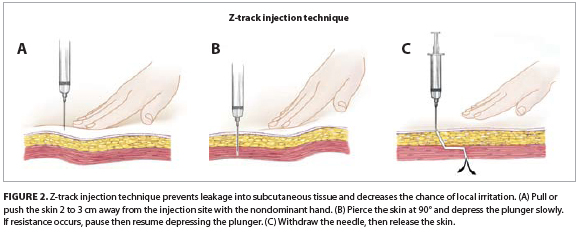EMERGENCY PROTOCOL - Benadryl Shortage
Due to a shortage of Benadryl (diphenhydramine) an EMERGENCY PROTOCOL for a substitution has been developed.
To: WVEMS Field Providers
From: Charles Lane, MD, WVEMS Regional Medical Director
Date: 10/30/2018
Re: IV Benadryl Shortage/Emergency Protocol for Vistaril
Charles Lane, MD, WVEMS Regional Medical Director has implemented an emergency protocol for Vistaril in the event that your drug box does not contain IV Benadryl due to shortage.
Vistaril (Hydroxyzine) will be given as the antihistamine for Anaphylaxis in the event that IV Benadryl is not availablein your drug box. Vistaril must be given IM ONLY in the buttock using the Z-track Method.
For Allergic Reaction: Give 25-50mg Benadryl PO (Tablets will be placed in WVEMS Drug Box)
For Anaphylaxis: Epinephrine 1:1000 0.3-0.5mg IM. May repeat in 5 minutes with no change (AEMT, Intermediate, Paramedic)
Adult Dose: Vistaril (Hydroxyzine) 25mg IM // Administered Dorsogluteal Muscle ONLY (Intermediate/Paramedic ONLY)
Pediatric Dose: Vistaril (Hydroxyzine) 12.5mg IM // Administered Dorsogluteal Muscle ONLY (Intermediate/Paramedic ONLY)
See video HERE for instruction on the Z-track Method for IM administration.

Vistaril
Vistaril Mechanism of Action: H‐1 receptor antagonist.
Be sure to have a long enough needle to get to the muscle of whomever is receiving this medicine.
You should ONLY use the buttock or the lateral thigh. The Z‐track method allows the medicine to be put in the muscle and held in place after the needle is withdrawn to prevent leaking out into the SQ tissue and skin where it can cause breakdown.
MANUFACTURERS RECOMMENDATIONS: Intravenous administration, subcutaneous administration, tissue necrosis. Intramuscular hydroxyzine injections may result in severe injection site reactions (including extensive tissue damage, tissue necrosis, and gangrene) requiring surgical intervention (including debridement, skin grafting and amputation). Hydroxyzine hydrochloride intramuscular solution is intended only for intramuscular administration and should not, under any circumstances, be injected via subcutaneous administration, intra-arterial administration, or intravenous administration.
Intramuscular Administration: Inject intramuscularly well within the body of a relatively large muscle. Inadvertent subcutaneous injection may result in significant tissue damage.
Adults: The preferred site is the upper outer quadrant of the buttock, (i.e., the gluteus maximus), or the mid-lateral thigh. The deltoid area should be used only if well developed such as in certain adults, and then only with caution to avoid radial nerve injury. Do NOT inject IM into the lower and mid-third of the upper arm.
Children: Preferably administer in the mid-lateral muscles of the thigh. The deltoid area should beused only if well developed such as in certain older children, and then only with caution to avoid radial nerve injury. Do NOT inject IM into the lower and mid-third of the upper arm.
CONTRAINDICATIONS:PROLONGED QT
Generally considered safe in 2nd and 3rd trimester pregnancy
IF YOU HAVE ANY QUESTIONS ABOUT THIS MEDICINE OR HOW TO DO THE Z-TRACK METHOD OF IM DRUG ADMINISTARTION, DO NOT GIVE IT UNTIL YOU SEEK EXPERT CONSULTATION WITH YOUR EMS SUPERVISOR OR OMD!!!

